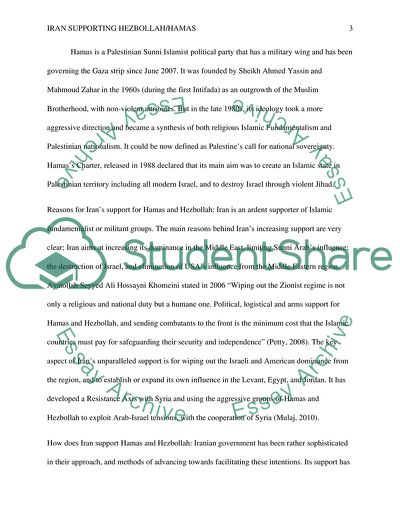Iran's Support for Hezbollah & Hamas Article Example | Topics and Well Written Essays - 1500 words. https://studentshare.org/politics/1777798-irans-support-for-hezbollah-hamas
Iran'S Support for Hezbollah & Hamas Article Example | Topics and Well Written Essays - 1500 Words. https://studentshare.org/politics/1777798-irans-support-for-hezbollah-hamas.


